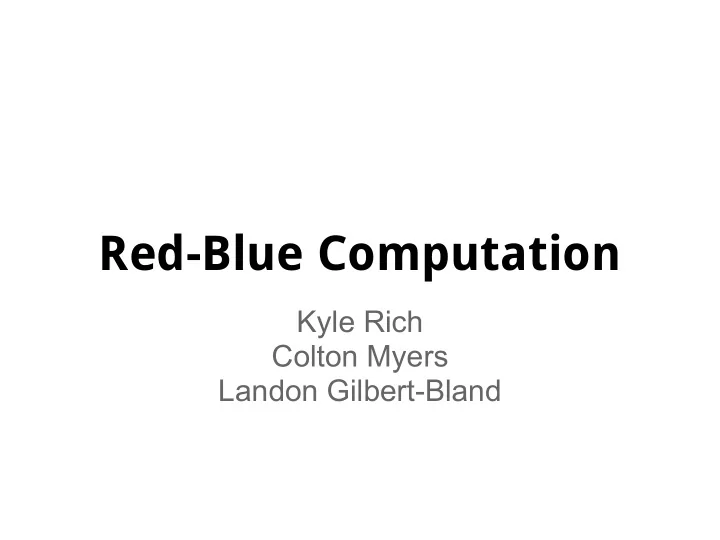

Red-Blue Computation Kyle Rich Colton Myers Landon Gilbert-Bland
Motivation Red/Blue is a fairly simple case study we looked at early in the semester. ● Opportunity to see real speed-up on parallel code ● Apply OpenMP and Pthreads knowledge
Two-Stage Computation 1. Red squares may move to the right into an empty (white) square 2. Blue squares may move down into an empty (white) square Original Red Step Blue Step Notice that it does not move recursively -- only one of the reds in the first row moved.
Convergence 1. Split the grid into NxN tiles 2. Compute % for each color in a given tile 3. If that % reaches a threshold, we're done, otherwise, keep stepping Converges (2x2 tiles and .5 convergence value)
Algorithm Summary (Sequential) read_grid(); while(true) { if (converges()) break; iterate_red(); // nested for loop iterate_blue(); // nested for loop }
Parallelization Difficulties and Strategies Problems: ● Partition boundaries (blue moves into vacated red square) ● Save previous iteration (all moves work from previous iteration) Solutions: ● Two different grids, iterate from one to the other ○ Eliminates boundary issues and thread synchronization ● Barrier between each iteration
OMP vs Pthreads OpenMP does all partitioning for us. Add #pragma omp parallel for and we're done. Pthreads requires manual partitioning, but is more optimizable as a result.
Conclusion ● Drastic speedups with both OMP and Pthreads ● Concrete example of drawbacks and advantages of Pthreads vs OMP ○ Complexity for Speedup ● Concrete examples of how one size doesn't fit all ○ Number of threads ○ Size of problem
Recommend
More recommend